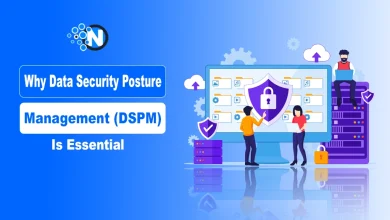
Digital landscapes undergo swift transformations daily. Today, cybersecurity is a big concern across various organizations. Each needs a strong security posture for safety against emerging threats. One such measure is Security Operations Center automation. It’s used to make cybersecurity operations more efficient.
This post explores SOC automation and what it’s all about. We’ll cover SOC’s application in finance, healthcare, and technology industries. It’s a strong defense against all sorts of threats.
<mark style="background-color:rgba(0, 0, 0, 0);color:#0061fb" class="has-inline-color"><strong>Understanding SOC Automation</strong></mark>
SOC automation uses automated systems and processes to handle cybersecurity threats. It integrates Artificial Intelligence, ML, and orchestration. This simplifies tasks, boosts threat detection, and speeds up responses. To gain a deeper understanding, you can read more about what is SOC automation and how it works.
<mark style="background-color:rgba(0, 0, 0, 0);color:#0061fb" class="has-inline-color"><strong>Key Benefits of SOC Automation</strong></mark>
- Efficiency: Automating security operations cuts the manual workload on security analysts. It lets them focus on critical threats.
- Speed: SOC automation platforms detect and respond to threats faster than human analysts.
- Accuracy: ML algorithms can identify patterns and anomalies with greater precision.
- Scalability: Automated systems can easily scale to handle increasing volumes of data and threats.
- Consistency: Leveraging automation ensures consistent handling of security incidents, reducing human error.
- 24/7 Monitoring of Security Incidents: Automated systems provide continuous monitoring. They ensure quick detection and resolution of threats, even outside business hours.
- Cost-Effectiveness: Initial setup can be expensive, but automation cuts long-term costs. It does this by using resources better and reducing the need for large security teams.
Challenges in Implementing SOC Automation
1. Complexity – Integrating various tools and technologies can be challenging.
2. Affordability – Its initial setup and maintenance can be expensive.
3. Skills Gap – Requires security analysts with specialized skills to operate automated systems.
<mark style="background-color:rgba(0, 0, 0, 0);color:#0061fb" class="has-inline-color"><strong>Real-World Examples of SOC Automation</strong></mark>
SOC automation finds practical applications across diverse industries. This demonstrates its effectiveness in fortifying defenses and ensuring regulatory compliance.
Finance Industry
The finance industry has lots of sensitive data. It’s a prime target for cyberattacks. SOC automation plays a crucial role in safeguarding financial institutions.
Financial institutions need strong cybersecurity. They handle sensitive transactions and face strict regulations. SOC automation helps by automating threat detection, incident response, and compliance reporting.
Implementation in Finance
Financial institutions use automation to track transactions and identify issues in real time. The system also reacts fast to potential threats. Moreover, it analyzes big data sets. It finds suspicious activities that could go unnoticed by humans. Such automation enhances proactive threat mitigation and operational efficiency.
Outcomes and Improvements
- Improved Threat Detection: Automated security systems identify and respond to threats in real-time.
- Compliance with Industry Regulations: Automation ensures that financial institutions follow industry regulations. It’s done this by providing accurate and timely reports.
- Cost Savings: Reducing manual interventions lowers your business’s operational costs.
Automating SOC tasks boosts cybersecurity in finance. It combines advanced technology to fight cyber threats and stay compliant. This method safeguards data and improves its security.
Healthcare Sector
Automation is making big strides in the healthcare sector. It’s another critical industry that benefits from SOC automation. Patient data and regulatory compliance are top priorities.
Healthcare organizations have special cybersecurity challenges. They must protect patient data and comply with regulations. Security operations center automation is the answer. It enhances security and makes compliance easier.
Deployment in Healthcare
SOC automation in healthcare involves automated threat detection. It protects electronic health records (EHRs) and other sensitive data. These systems can identify potential breaches and trigger immediate responses to mitigate risks.
Results and Impact
- Data Security: Automated systems provide continuous monitoring and protection of patients’ data.
- Regulatory Compliance: Automation helps healthcare providers obey regulations like HIPAA. It’s done by automating reporting and auditing.
- Operational Efficiency: Reducing manual security tasks frees up resources for patient care.
Technology Sector
The technology sector confronts persistent cyber threats amidst a shifting landscape. SOC automation helps tech companies stay ahead of these threats. It’s providing them with advanced security measures.
Tech companies face ever-changing cybersecurity threats. SOC automation helps. Its integrated advanced security tools protect their digital assets.
Integration in Technology
In the tech industry, SOC automation boosts threat detection and response with AI and ML. Automated systems quickly spot patterns and anomalies in network traffic. This allows for fast responses to potential threats.
Successes in Cybersecurity
- Rapid Threat Response: Automated systems can respond to threats in real time, minimizing potential damage.
- Scalability: SOC automation allows tech companies to grow their security operations. It helps them meet the demands of a growing digital landscape.
- Resource Optimization: Automating routine tasks lets tech companies save time. They can then focus on innovation.
<mark style="background-color:rgba(0, 0, 0, 0);color:#0061fb" class="has-inline-color"><strong>Lessons Learned and Best Practices</strong></mark>
The automation of SOC has given valuable insights and best practices. Many industries have implemented it. These can guide future efforts.

Common Themes and Insights
Effective SOC automation implementation in any sector hinges on several crucial factors:
- Continuous Improvement: Regular updates and improvements are vital. They keep automated systems effective against changing threats.
- Skilled Personnel: A team with the right skills and expertise is crucial for managing and operating automated systems.
- Integration is Key: Successful SOC automation requires the seamless integration of various tools and technologies.
<mark style="background-color:rgba(0, 0, 0, 0);color:#0061fb" class="has-inline-color"><strong>Best Security Operations Practices</strong></mark>
Start Small: Begin with automating routine tasks and gradually expand to more complex processes.
Clear Objectives: Aligning objectives with business goals ensures that automation helps your business to succeed.
Focus on Training: Invest in training programs to equip your team with the necessary skills.
Monitor and Adjust: Continuously monitor the performance of automated systems and make adjustments as needed.
Collaboration: It is good to encourage collaboration between security teams, IT staff, and other departments. This fosters a holistic approach to cybersecurity in the organization.
<mark style="background-color:rgba(0, 0, 0, 0);color:#0061fb" class="has-inline-color">Conclusion</mark>
SOC automation is revolutionizing the way organizations manage their cybersecurity. SOC automation improves threat detection, response time, and resource use. It helps defend against cyber threats. Real-life examples exist in finance, healthcare, and technology industries. They’ve proven that security operations automation protects data and compliance.
Embracing SOC automation is not just about improving operational efficiency. It’s about strengthening the security posture of organizations. This aims to mitigate emerging threats in a dynamic security landscape. Technology is evolving, and advanced AI and ML will enhance SOC automation. It will better protect digital assets and preserve trust in a connected world.




